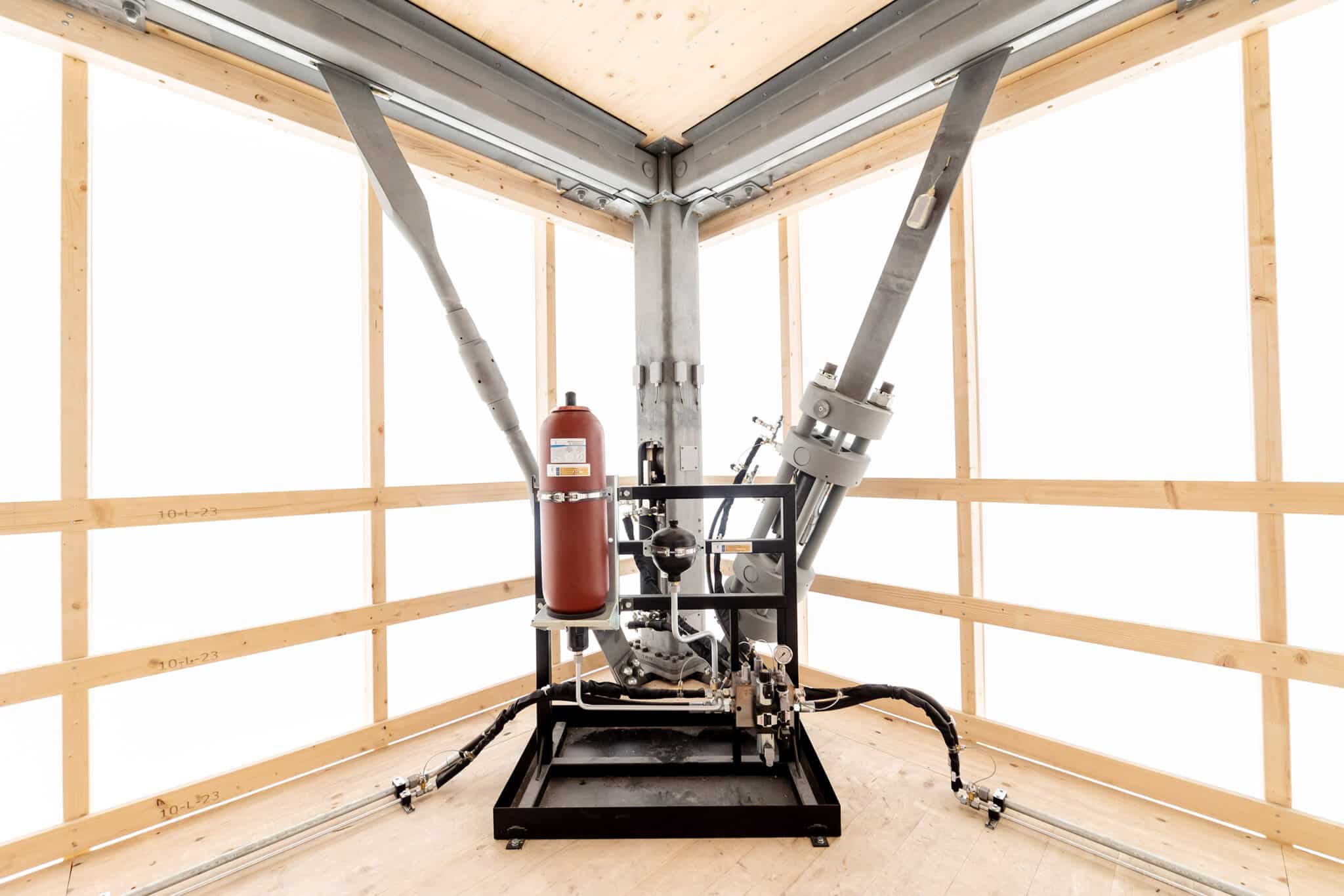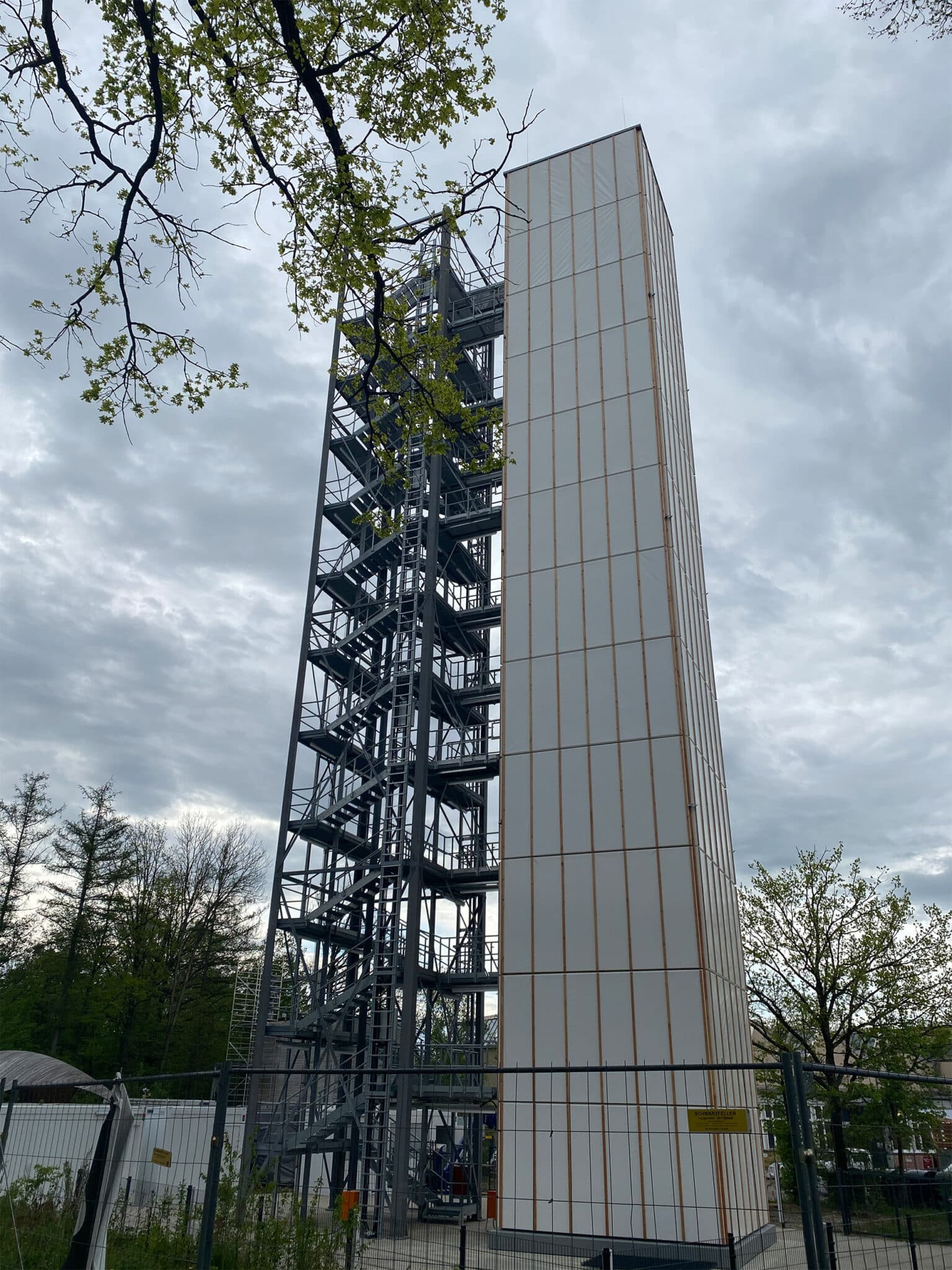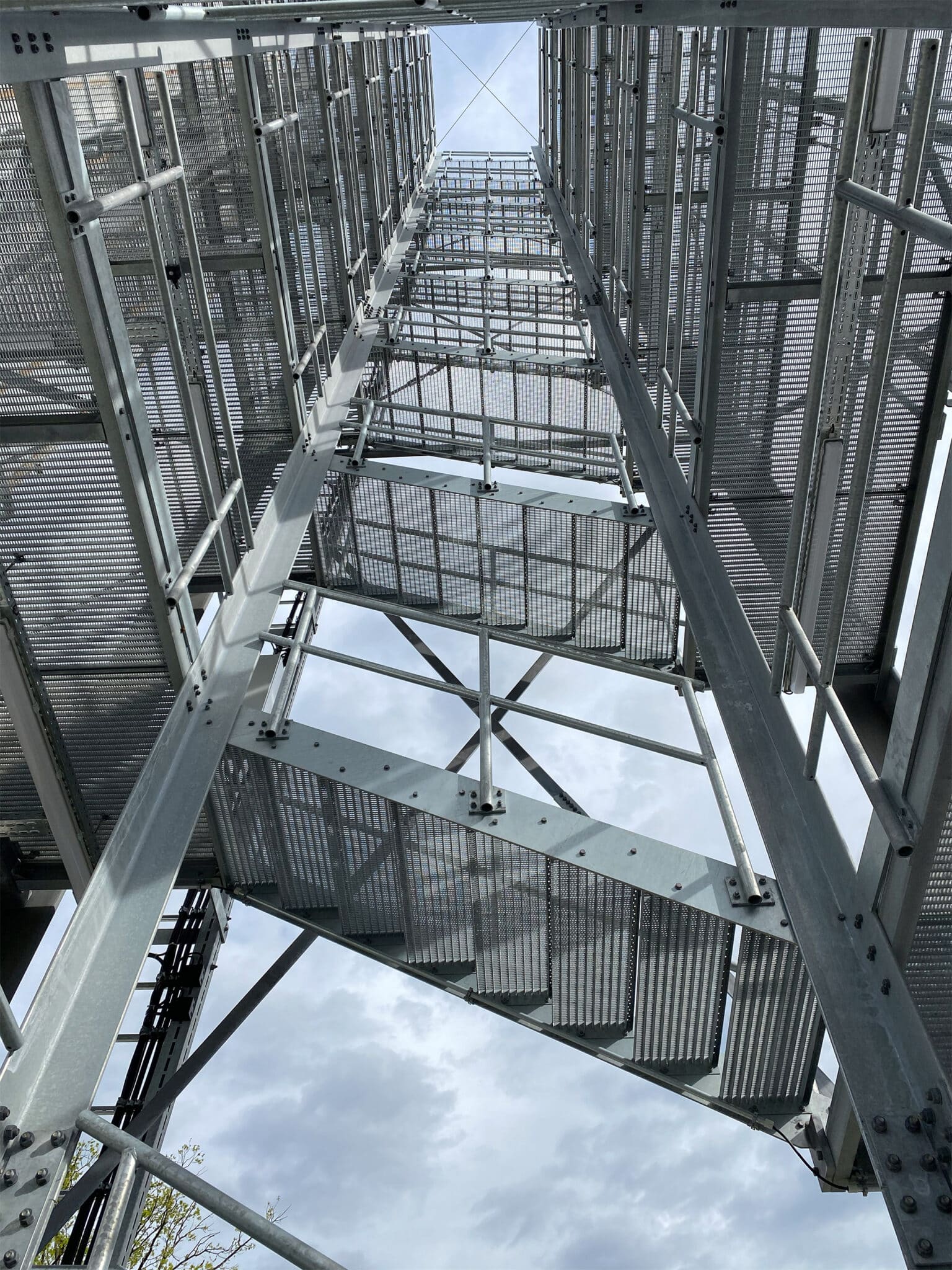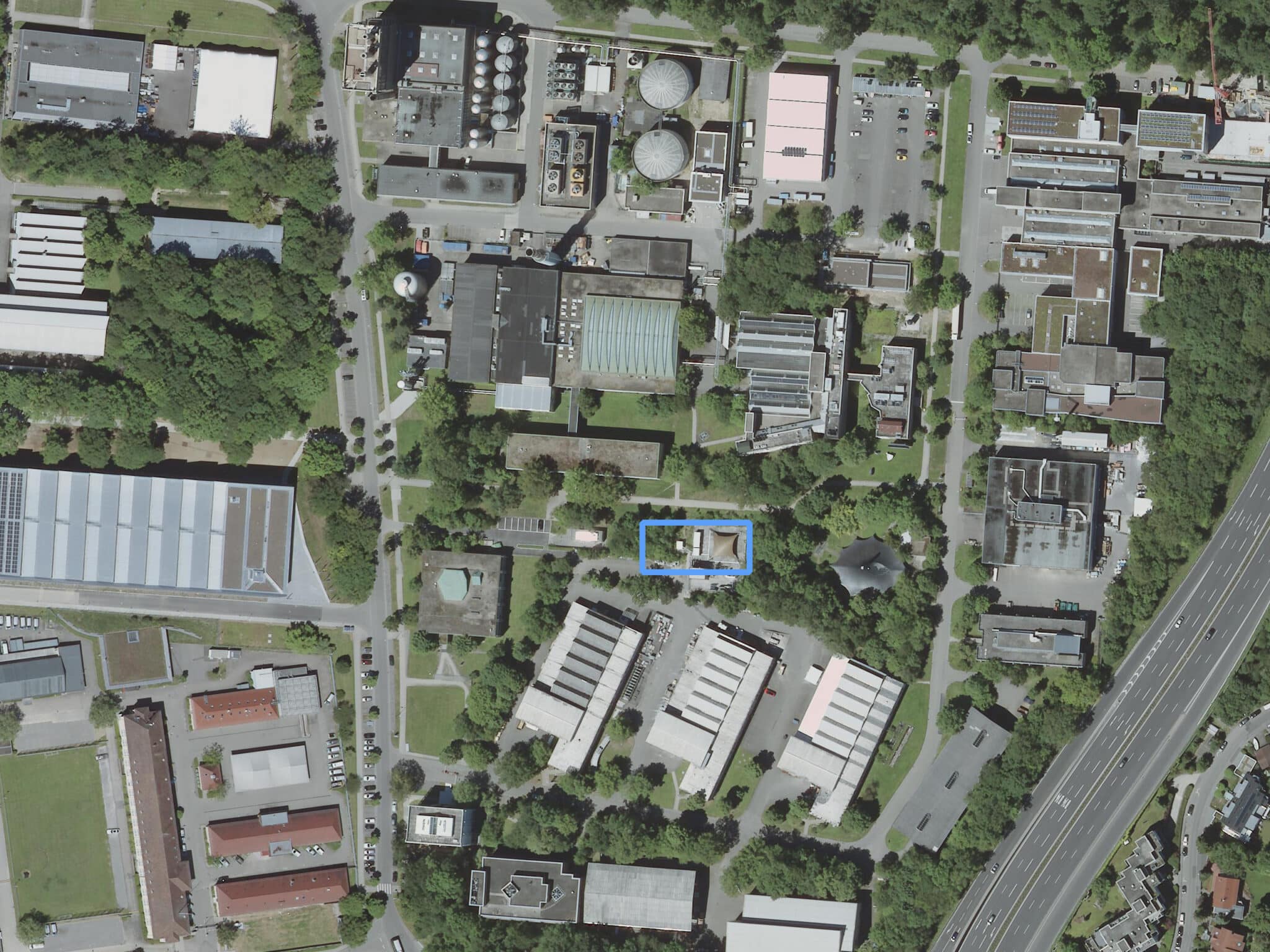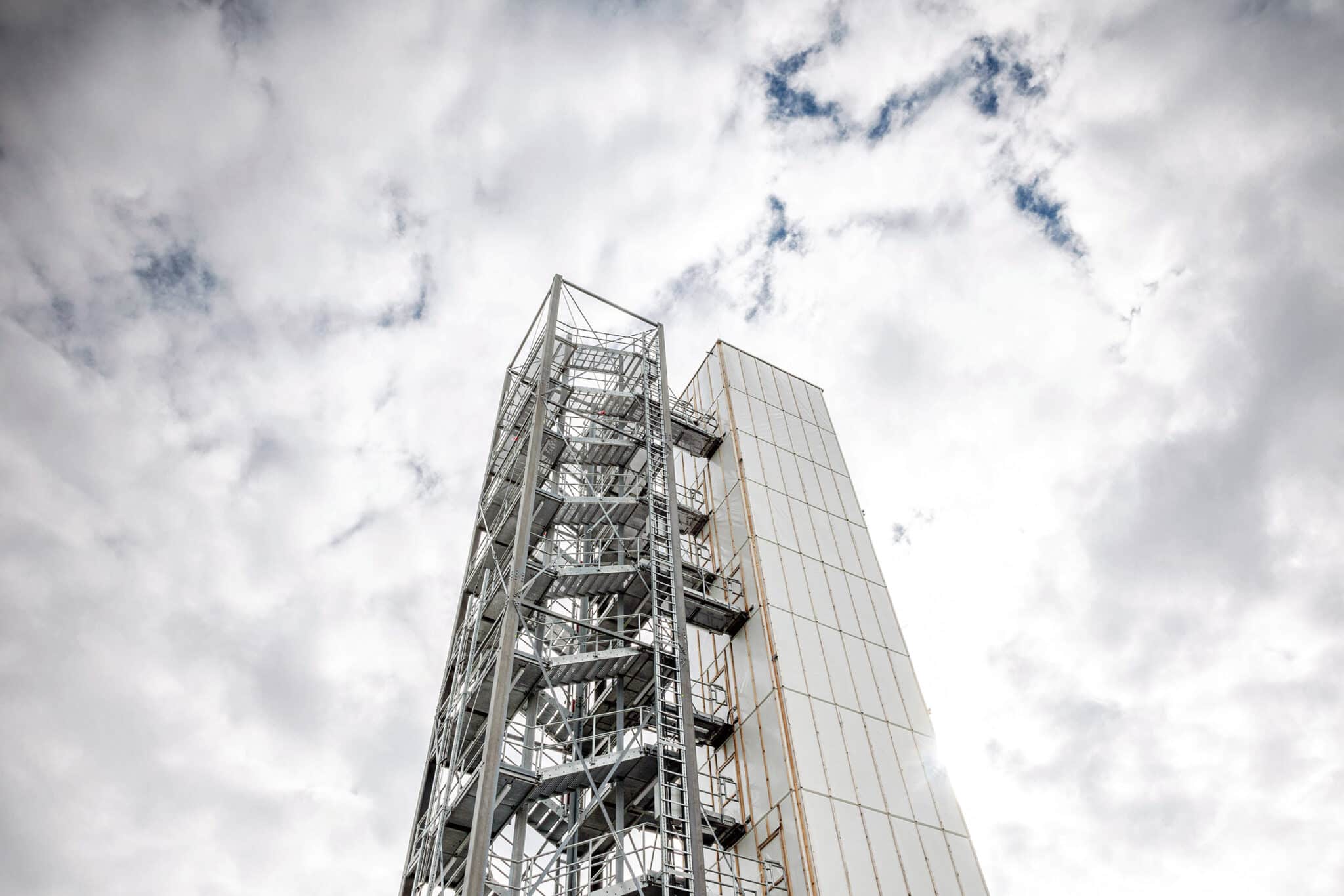Adaptives Demonstrator-Hochhaus – Adaptive Demonstrator High-Rise Building
Smart technology for lower consumption of materials
As part of the Collaborative Research Centre 1244 at the University of Stuttgart, full-size self-regulating skins and structures are being tested on a specially designed tower. IBA’27 is supporting the project, which could provide technological impetus for resource-saving ways of building.
Since mid-2021, a slender building has been projecting roughly 37 metres into the sky at the University of Stuttgart’s Vaihingen campus. The 12-storey demonstrator high-rise building is the result of interdisciplinary collaboration between 14 institutes at the University of Stuttgart. Brought to life in 2017 by Prof. Werner Sobek, Collaborative Research Centre 1244 is looking for solutions to create sufficient living space for the future while protecting the environment and conserving materials. One potential solution is to use structures and skins that »self-regulate« or adapt to changing environmental impacts. These approaches are being examined using a full-scale experiment on the newly built tower. For example, the tower has sensors that detect high wind pressure and then trigger deformations in the supporting structure, thus ensuring that integrated hydraulic cylinders produce resistance. This allows for more lightweight buildings and conserves materials. The façade of the research high-rise building, which currently consists of a single-layer recycled membrane, will be repeatedly replaced with adaptive shell elements over the coming years. For example, climate-active elements or others that actively influence the light and energy input into the building, air exchange and heat transfer can be tested under real conditions. The project, funded by the German Research Foundation (DFG), will run until 2028 and provide insights into the built environment of the future.
| Location | Stuttgart-Vaihingen |
| Size | 0.54 ha |
| Project start | IBA’27 Project since 2020 |
| Timeline | 2017 Start of research project 2021 Completion and opening of the building 2027 In operation 2028 Expected project completion |
| Project initiator | Institute für Lightweight Structures and Conceptual Design (ILEK), University of Stuttgart |
